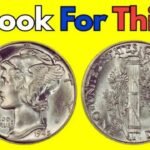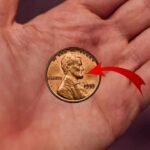Imagine digging through your loose change and discovering a coin worth millions. Sounds like a fairy tale, right? But it’s not as far-fetched as it seems. One specific Rare Bicentennial Quarter is rumored to be worth as much as $11 million, and astonishingly, it might still be out there—circulating among us in everyday transactions. Most people never stop to examine the coins they receive back at a coffee shop or supermarket. They toss them into jars, wallets, or car cupholders. But that simple oversight might cost them millions.
In this article, we’ll dive deep into what makes this Rare Bicentennial Quarter so valuable, the details that distinguish it from the ordinary versions, and how you might just spot one in your everyday life. Keep reading—you could be sitting on a historic treasure without even knowing it.
A Closer Look at the Bicentennial Quarter
To understand the value behind this special coin, you have to start with its origins. In 1976, the United States marked its bicentennial, the 200th anniversary of the nation’s independence. To commemorate this historic moment, the U.S. Mint created a series of specially designed coins—including the iconic Bicentennial Quarter.
Unlike the standard Washington quarter that typically features an eagle on the reverse, the Bicentennial edition showcases a drummer boy accompanied by a torch encircled by 13 stars, symbolizing the original 13 colonies. The front still bears the classic profile of George Washington, but it is the dual date, “1776-1976,” that immediately signals this coin’s unique commemorative status.
While hundreds of millions of these Bicentennial Quarters were produced and are still common today, only a select few—perhaps just one—Rare Bicentennial Quarter holds the astonishing value of $11 million. But what sets it apart?
Why Is This One Bicentennial Quarter Worth $11 Million?
You might be wondering how a 25-cent coin can be worth more than a luxury yacht or a downtown penthouse. The answer lies in its rarity, composition, and condition. While regular Bicentennial Quarters were mass-produced in copper-nickel for public circulation, this specific Rare Bicentennial Quarter is believed to be a mint prototype or error coin. These kinds of coins are not just rare—they’re practically legendary in the numismatic (coin collecting) community.
Here’s what experts believe makes the $11 million quarter so special:
- Struck on the wrong planchet: This rare version may have been minted on a silver or gold planchet instead of the standard copper-nickel composition.
- Unique die or design elements: Slight deviations in the drummer boy engraving, or subtle textural differences, can dramatically increase a coin’s rarity and value.
- Prototype or test coin: Some coins are created for internal use or test purposes and accidentally escape the mint, making them one-of-a-kind.
- Mint condition: Graded in the highest bracket—MS67 or above—coins in pristine, uncirculated condition are exponentially more valuable.
- High demand from collectors: The mythos surrounding this coin makes it highly desirable to elite collectors willing to pay top dollar.
Overview of the Rare Bicentennial Quarter
| Coin Name | Bicentennial Quarter |
|---|---|
| Year Released | 1976 |
| Special Feature | Dual Date (1776–1976), Drummer Boy Design |
| Reverse Design | Drummer Boy, Torch, 13 Stars |
| Standard Material | Copper-Nickel |
| Rare Version Material | Believed to be Silver or Gold |
| Estimated Value | Up to $11 Million |
| Circulation Status | Possibly Still in Circulation |
How to Tell If You Have the Rare Bicentennial Quarter
Spotting the multimillion-dollar coin takes a little more than a quick glance. Here’s a detailed breakdown of how to inspect any Rare Bicentennial Quarter you come across:
- Check the coin’s edge:
- Regular quarters have a visible copper strip when viewed from the side.
- Silver versions, however, show a solid, uniform color all around the edge.
- If your Bicentennial Quarter has no copper banding, it’s worth a closer inspection.
- Weigh the coin:
- Standard Bicentennial Quarters weigh approximately 5.67 grams.
- If your coin weighs significantly more or less, it may be made from a different metal—potentially silver or even gold.
- Inspect the design carefully:
- Look at the drummer boy’s hat, drum, and face—errors such as extra lines, missing details, or double impressions could mark it as a valuable mint error.
- Examine the mint mark (if present):
- Some of the rarest coins lack a mint mark (known as “No-S” coins), or they have unusual markings due to minting errors.
- Condition is king:
- A coin in Mint State (MS) condition is much more valuable.
- Use a magnifying glass to check for scratches, wear, or dings.
- Seek professional help:
- If you believe you may have a Rare Bicentennial Quarter, don’t take chances.
- Visit a certified coin appraiser or send it to a reputable grading service like PCGS or NGC.
Could a Rare Bicentennial Quarter Really Be in Circulation?
Yes, it’s entirely possible—though extremely unlikely. Some of the world’s most valuable coins have been accidentally released into circulation and discovered decades later by unsuspecting people. This is precisely what fuels the legend of the Rare Bicentennial Quarter still floating around in pocket change.
There are numerous tales of individuals finding high-value coins in:
- Change from vending machines
- Tips at restaurants
- Forgotten jars or piggy banks
- Garage sales and estate auctions
- Rolls of coins purchased from banks
So while the odds are slim, they’re not zero. It’s this faint hope—and the real-life stories behind it—that make people obsessively scan every Bicentennial Quarter they come across.
What About Other Valuable Bicentennial Quarters?
While the $11 million version steals the spotlight, there are other valuable Bicentennial Quarters you should look for:
- 1976-S Silver Proof Bicentennial Quarter: Minted in 40% silver, these coins are often worth $20 to $100+, depending on condition.
- 1976 No-S Bicentennial Quarter: Rare coins missing the San Francisco mint mark are highly collectible.
- Error Quarters: Coins with off-center strikes, double dies, or planchet flaws can range from $500 to several thousand dollars in value.
Each of these variations falls under the umbrella of the Rare Bicentennial Quarter category, especially when they feature minting errors or are struck on the wrong metal planchets.
FAQs About the Rare Bicentennial Quarter
Q1: How many Bicentennial Quarters were made?
A1: Over 1.6 billion were minted across Philadelphia, Denver, and San Francisco. But only a few rare variants are of significant value.
Q2: How can I store valuable coins safely?
A2: Use coin flips or hard plastic holders designed for long-term storage. Avoid touching the surface of the coin directly.
Q3: What should I avoid doing to a potentially rare coin?
A3: Never clean it. Cleaning reduces the coin’s value and can disqualify it from top grading.
Q4: Where can I get a coin appraised?
A4: Visit certified numismatists or submit your coin to services like PCGS, NGC, or ANACS for professional evaluation.
Q5: What other rare coins are worth looking for?
A5: The 1943 copper penny, 1916-D Mercury dime, and the 1894-S Barber dime are other coins known for their extreme value.
Final Thoughts
The idea of finding a coin worth $11 million in your change purse may seem like wishful thinking, but the reality is—it’s happened before, and it could happen again. The Rare Bicentennial Quarter isn’t just a coin; it’s a symbol of the potential that even ordinary objects can hold extraordinary value. It’s a piece of American history that could change your life.
So, the next time you receive a quarter in change, don’t ignore it. Flip it over, look for the drummer boy, and inspect the edges. Pay attention to the smallest details. That unassuming little coin might just be a Rare Bicentennial Quarter, and if you’re lucky enough to find the right one, it could be your ticket to millions.
Keep looking—history and fortune may be hiding right in the palm of your hand.
Some Important Link
| Telegram Group | Click Here |
| WhatsApp Group | Click Here |
| Home Page | Click Here |










